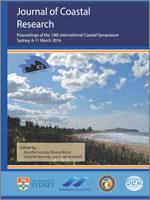Silva, R.; Mendoza, E., Mariño-Tapia, I.; Martínez, M.L., and Escalante, E. 2016. An artificial reef improves coastal protection and provides a base for coral recovery. In: Vila-Concejo, A.; Bruce, E.; Kennedy, D.M., and McCarroll, R.J. (eds.), Proceedings of the 14th International Coastal Symposium (Sydney, Australia). Journal of Coastal Research, Special Issue, No. 75, pp. 467-471. Coconut Creek (Florida), ISSN 0749-0208.
In 2007, Hurricane Dean caused extensive damage along the coast of Riviera Maya, exceptionally large mass of wind-transported sand was deposited on the beach front and gardens of the former NH Hotel in Puerto Morelos. Due to the chaotic sea state and the debris carried by the storm, the sand was contaminated with various pollutants, including terrigenous materials and biogenic matter. As an emergency measure, this sand was used to create an artificial dune in the grounds of the hotel. Given the high probability of future storms of such magnitude, it was decided that some form of sediment transport control was needed to protect the beach so an artificial reef was constructed 120 m off the shore. The structure, made of prefabricated concrete elements, has been effective as a coastal defense barrier and has also provided a habitat for several reef species. Five years after the placement of the structure the beach front, which had previously registered erosion problems, had returned to its natural cycle of summer growth and winter retreat and a large number of fish and coral species were using the habitat provided by the structure. However, the coral reef growing on this prefabricated structure was not long-lasting. The massive and persistent occurrence of Sargassum in 2015 brought oxygen depletion, reduced pH, an excess in nutrients and less water transparency on the Caribbean coast, leading to the decline of the reef habitat. Further studies are necessary to test whether reef species recolonize the prefabricated substrate.





